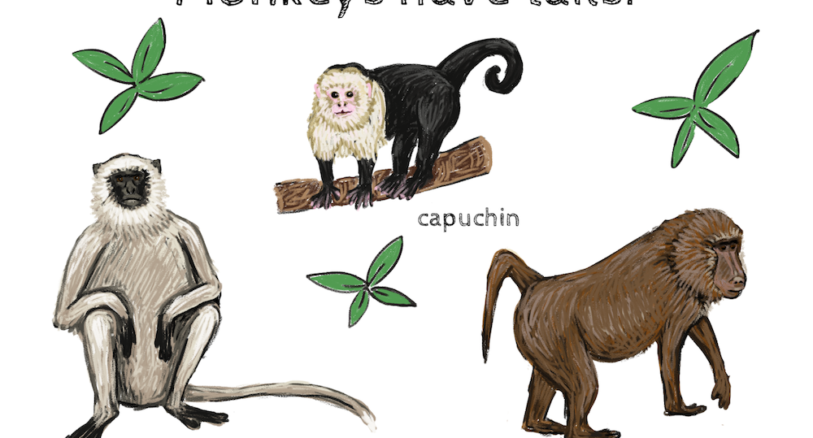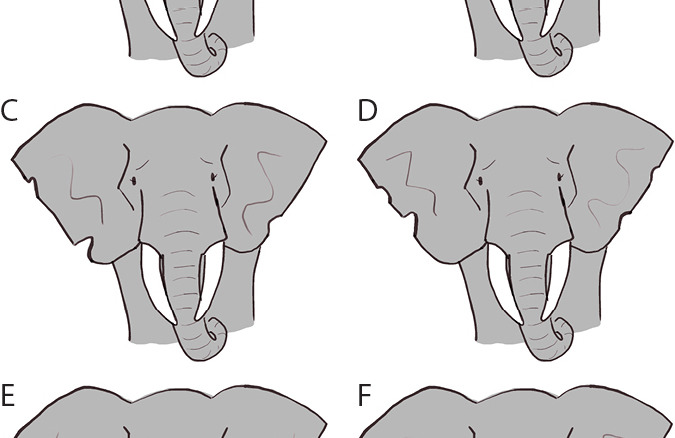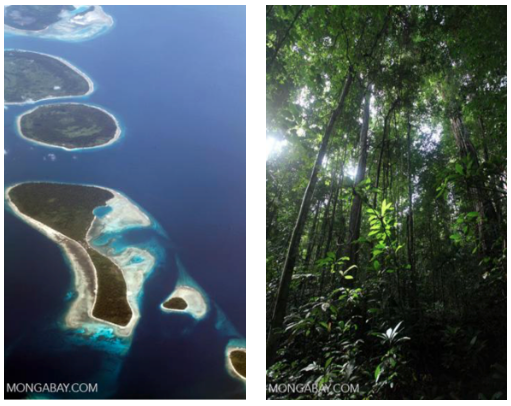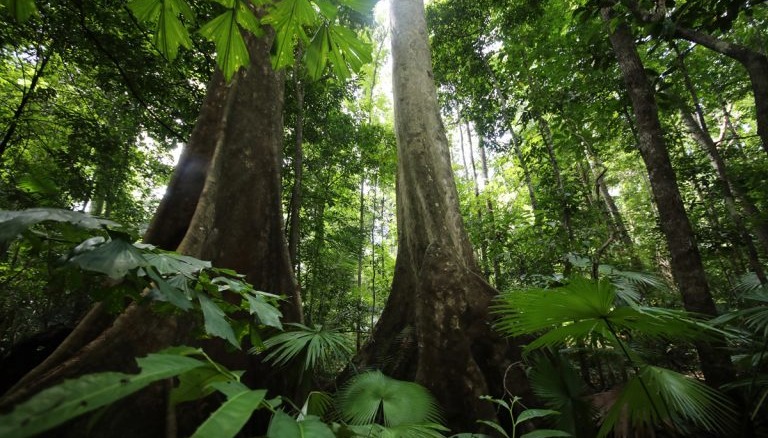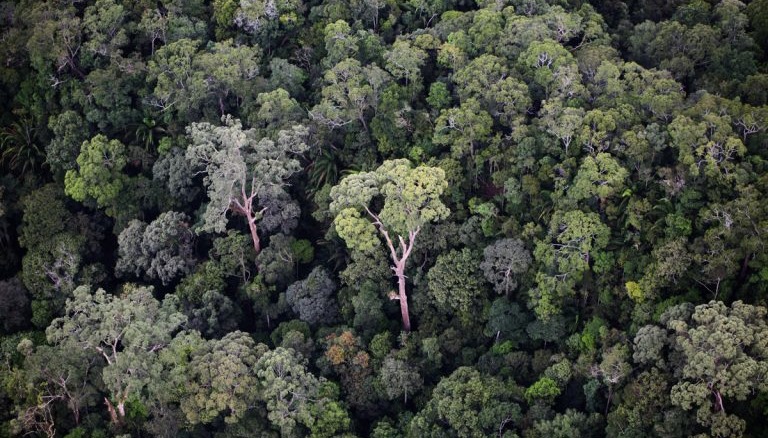Created by Lisa Algee
3rd-5th Grade (upper elementary/primary)
Note: This is lesson 4 in a 4-part series on the water cycle, photosynthesis, exploring ecosystems, and scientific inquiry in local ecosystems. Find lessons 1, 2 and 3 here (click relevant link).
This scientific inquiry is geared at students that live along the Central California Coast, but the idea can be modified to work with a local environmental issue near where students live or attend school.

Gidget, a southern sea otter from the Monterey Bay Aquarium. Courtesy of the Monterey Bay Aquarium.
3rd-5th Grade (upper elementary/primary)
Lesson 4: Doing scientific inquiry in local ecosystems
(a) To provide students with an opportunity to participate in scientific inquiry by investigating the water quality at 5 sites: school, filtered water from teacher’s house, Pinto Lake, Corralitos Creek, and the Pajaro River.
(b) This project is linked to Melissa Miller (a senior wildlife veterinarian at the Department of Fish and Wildlife) and her discovery of the cause-effect relationship between freshwater blue-green algae at Pinto Lake (a recreational lake frequented by students and their families) and several sea otter deaths along the Central California Coast. This will serve as an excellent example to demonstrate how inland areas (Pinto Lake) are connected to the bay (Monterey Bay) through the watershed, i.e., Pinto Lake Corralitos Creek Pajaro River Monterey Bay.-picture.jpg)
Scientific inquiry activity
Purpose: The purpose of this lesson is two-fold: (a) to provide a real life experience of ‘doing scientific inquiry’ which is focused on a local issue; and (b) to provide an opportunity for students to share their results with an expert scientist (Activity 1) Melissa Miller.
Key concepts: science, inquiry, scientific inquiry, nitrates, phosphates, bacteria, pH, dissolved oxygen, temperature, fertilizer, ammonia, blue-green algae, Microcystis, Microcystin, toxins, contamination, pollution, decomposition, etc.
Research based: Sociocultural theory with an emphasis on co-constructing knowledge and negotiating meaning using Wells (1999, 2002, 2010) model, ‘Spiral of learning and teaching through inquiry’.
Materials: Scientific inquiry template books, water quality kit, pencils, erasers, gloves, posters, and markers.
Common Core Standards:
English Language Arts Standards:
Reading Informational Text:
Key Ideas and Details:
CCSS.ELA-Literacy.RI.3.3 (third) Describe the relationship between a series of historical events, scientific ideas or concepts, or steps in technical procedures in a text, using language that pertains to time, sequence, and cause/effect.
CCSS.ELA-Literacy.RI.4.3 (fourth) Explain events, procedures, ideas, or concepts in a historical, scientific, or technical text, including what happened and why, based on specific information in the text.
CCSS.ELA-Literacy.RI.5.3 (fifth) Explain the relationships or interactions between two or more individuals, events, ideas, or concepts in a historical, scientific, or technical text based on specific information in the text.
Craft and Structure:
CCSS.ELA-Literacy.RI.3.4 (third), 4.4 (fourth), and 5.4 (fifth) Determine the meaning of general academic and domain-specific words and phrases in a text relevant to a grade 3-5 topic or subject area.
CCSS.ELA-Literacy.RI.3.5 (third) Use text features and search tools (e.g., key words, sidebars, hyperlinks) to locate information relevant to a given topic efficiently.
Integration of Knowledge and Ideas:
CCSS.ELA-Literacy.RI.3.7 (third) Use information gained from illustrations (e.g., maps, photographs) and the words in a text to demonstrate understanding of the text (e.g., where, when, why, and how key events occur).
CCSS.ELA-Literacy.RI.3.8 (third) Describe the logical connection between particular sentences and paragraphs in a text (e.g., comparison, cause/effect, first/second/third in a sequence).
CCSS.ELA-Literacy.RI.4.7 (fourth) Interpret information presented visually, orally, or quantitatively (e.g., in charts, graphs, diagrams, time lines, animations, or interactive elements on Web pages) and explain how the information contributes to an understanding of the text in which it appears.
CCSS.ELA-Literacy.RI.4.8 (fourth) Explain how an author uses reasons and evidence to support particular points in a text.
CCSS.ELA-Literacy.RI.5.7 (fifth) Draw on information from multiple print or digital sources, demonstrating the ability to locate an answer to a question quickly or to solve a problem efficiently.
CCSS.ELA-Literacy.RI.5.8 (fifth) Explain how an author uses reasons and evidence to support particular points in a text, identifying which reasons and evidence support which point(s).
Writing:
Research to Build and Present Knowledge:
CCSS.ELA-Literacy.W.3.7 (third) Conduct short research projects that build knowledge about a topic.
CCSS.ELA-Literacy.W.4.7 (fourth) Conduct short research projects that build knowledge through investigation of different aspects of a topic.
CCSS.ELA-Literacy.W.5.7 (fifth) Conduct short research projects that use several sources to build through investigation of different aspects of a topic.
Mathematics Standards:
Measurement and Data:
• Represent and interpret data (third, fourth, and fifth).
Mathematical Practices:
• Reason abstractly and quantitatively (third, fourth, and fifth).
• Construct viable arguments and critique the reasoning of others (third, fourth, and fifth).
Next Generation Science Standards (NGSS):
Disciplinary Core Idea Progression:
Earth Space Science Progression (ESS2.E): Living things can affect the physical characteristics of their environment.
Earth Space Science Progression (ESS3.C): Societal activities have had major effects on the land, ocean, atmosphere, and even outer space. Societal activities can also help protect Earth’s resources and environments.
NGSS Science and Engineering Practices:
Asking Questions and Defining Problems:
• Ask questions that can be investigated and predict reasonable outcomes based on patterns such as cause and effect relationships.
Planning and Carrying Out Investigations:
• Evaluate appropriate methods and/or tools for collecting data.
• Make observations and/or measurements to produce data to serve the basis for evidence for an explanation of a phenomenon or test a design solution.
Analyzing and Interpreting Data:
• Represent data in tables and/or various graphical displays (bar graphs, pictographs, and/or pie charts) to reveal patterns that indicate relationships.
• Analyze and interpret data to make sense of phenomena, using logical reasoning, mathematics, and/or computation.
• Compare and contrast data collected by different groups in order to discuss similarities and differences in findings.
Constructing Explanations and Designing Solutions:
• Construct and explanation of observed relationships.
• Use evidence (e.g., measurements, observations, patterns) to construct or support an explanation or design a solution to a problem.
• Identify the evidence that supports particular points in an explanation.
Engaging in Argument from Evidence:
• Compare and refine arguments based on an evaluation of the evidence presented.
• Distinguish among facts, reasoned judgment based on research findings, and speculation in an explanation.
• Respectfully provide and receive critiques from peers about a proposed procedure, explanation or model by citing relevant evidence and posing specific questions.
• Construct and/or support an argument with evidence, data, and/or a model.
• Use data to evaluate claims about cause and effect.
Obtaining, Evaluating and Communicating Information:
• Obtain and combine information from books and/or other media to explain phenomena or solutions to a design problem.
• Communicate scientific and/or technical information orally and/or in written formats, including various forms of media and may include tables, diagrams, and charts.
Procedure:
Wells’ model, “Spiral of learning and teaching through inquiry,” in action:
I. Tapping into students’ prior knowledge and experiences:
Pre-assessment: (Use pdf) [Note: The pre and post-assessments are assessing understanding of the scientific inquiry process in addition to students’ attitudes (perceptions) about ‘doing science’.]
1. What does it mean to ‘do science’?
2. What do scientists do?
3. What are your thoughts/feelings about science?
4. When you think about a scientist, what image comes to your mind?
5. Do you think you can do science? Explain your answer.
Use the pre-assessment questions to tap into students’ prior knowledge and experience about engaging in the scientific inquiry process of investigating the water quality at 5 locations. Allow students time to share their knowledge and experiences in pairs, small groups, and whole class. Both you and the students can review the scientific inquiry template books (after the pre-assessment) to scaffold each step of the inquiry process. This also provides an opportunity to discuss key concepts within the context of the book.
II. Gathering information:
Students can seek information from the teacher (articles) and Internet about Melissa Miller’s discovery of how blue-green algae from Pinto Lake flowed through the Pajaro watershed: Corralitos Creek, the Pajaro River, and Pacific Ocean, which resulted in the death of several sea otters. Microcystin is a toxin released from blue-green algae. This toxin contaminated the shellfish which the sea otters eat, thus resulting in fatal liver damage. Students’ mission is to investigate whether these sites have additional contaminates such as nitrates, phosphates, bacteria, etc. Note: Your class may not reside along the Central California Coast, thus you can choose a different environmental issue to focus on. If you need a scientific inquiry template book designed for the local environmental issue your class is investigating, please contact the curriculum designer (Lisa M. Algee at [email protected]) and she can assist you.
Teacher resources:

Water quality template book
III: Co-constructing knowledge together:
Allow students time to learn about what a watershed is, in this specific case, we as a class are starting at the source of the problem (Pinto Lake). We will first test the water at (a) Pinto Lake, (b) Corralitos Creek, (c) Pajaro River), (d) school (as a control), and (e) filtered water, also as a control. As a class, explore Google maps to get a visual image of how the watershed flows (starting at Pinto Lake and ending with the Pajaro River flowing into the Pacific Ocean).
IV. Understanding
Demonstrating understanding through post-assessment and activities (see activities):
Post-assessment: (Use pdf)
1. What does it mean to ‘do science’?
2. What do scientists do?
3. What are your thoughts/feelings about science?
4. When you think about a scientist, what image comes to your mind?
5. Do you think you can do science? Explain your answer.
Activity 1: Field trip
Purpose: This activity has two purposes: (1) to provide students with a real life experience of two local ecosystems: (a) wetlands, by visiting the Watsonville Slough, and (b) oceans, by visiting the Monterey Bay Aquarium. Students will make observations of both biotic (animals) and abiotic (non-living things) at both locations. They will also use tools, such as binoculars and microscopes to get a better visual image of particular animals and plants. The second purpose: (2) to provide an opportunity for students to share their results from their scientific inquiry project on water quality (Lesson 4) and receive constructive feedback from an expert, Melissa Miller.
Materials: Binoculars, microscopes, camera, sketch pad and/or field trip journal, poster boards with students’ results (by group): nitrate group, phosphate group, pH group, DO/temp group (dissolved oxygen and temperature), and the bacteria group. Melissa Miller brought: sea otter pelts, skulls, bones, teeth, x-rays, and a PowerPoint presentation. We all celebrated with juice and cookies at the end of Melissa’s visit.
Procedure:
Field trips:
• On the field trips, students can make observations and record them in their sketch pads and/or field trip journals. If you want students to observe particular aspects of an ecosystem or characteristics and/or behavior of an animal, you can provide ‘search and seek’ questions for students. These are specific questions for students to seek answers to, i.e., make observations. Your main objective is to have fun and encourage students to use all five senses when exploring and making observations.
• During and after the field trips, provide an open discussion space for students to share their experiences with each other and the teacher (including the adult chaperones attending the field trips).
• See pictures in Word L4 folder.
Visiting scientist:
• Have each group copy their table and graph from their scientific inquiry template books (on water quality, Lesson 4), onto a poster board or the whiteboard to share their results with the visiting scientist.
• Provide an opportunity for each group to practice sharing their results in front of the class. Students should also practice providing constructive feedback to each group presenting their results.
• Celebrate the event with a treat, such as juice and cookies.
• See pictures in Word L4 folder and 3rd- 5th Students’ work L4 folders.
Activity 2: compare biodiversities
Purpose: Having experienced two field trips, i.e., exploring both wetlands and oceans
(Activity 1), students are now in a position to compare and contrast the biodiversity of
these two ecosystems using a graphic organizer (Venn diagram). Once students have
made this comparison/contrast, they will become aware of how another ecosystem
(estuaries), overlap between wetlands and oceans in both biotic and abiotic
characteristics. Note: This activity builds from Lesson 3.
Key concepts: ecosystems, biodiversity, wetlands, freshwater, oceans, compare
(similar), contrast (different), overlap, estuary, biotic, and abiotic characteristics.
Materials: Ecosystem books (wetlands and oceans), revisit Internet web-sites on
wetlands and oceans, Venn diagram, Smartboard, whiteboard, or butcher paper, markers,
and pencils.
Procedure:
- Ask students if they recall the meaning of the key concepts, many of which were introduced in Lesson 3: ecosystem, biodiversity, biotic, and abiotic.
- Use a Venn diagram (whole class on a Smartboard, whiteboard, or large piece of butcher paper) to compare and contrast the biotic characteristics (animals) of each ecosystem.
- Students can revisit the Internet and/or their Ecosystem books to facilitate their memory.
- They can also reflect on their observations of wetlands and oceans from the field trips at the Watsonville wetlands and Monterey Bay Aquarium (Lesson 4: Activity 1).
- Co-construct the Venn diagram together. Point out to the students that the overlapping circle between each ecosystem is an estuary. Co-construct the meaning of an estuary together and verify the meaning in a dictionary or website such as http://www.elkhornslough.org/education/teachers/teacher_resources.htm (for an Estuary Glossary).
- Have students complete their own Venn diagram (see 3rd-5th Students’ work L4).
- These can be showcased in the class for others to see (have fun)! Note: Lots of sharing and dialogue is required for this activity.
Activity 3: Take local action

Students can create a PowerPoint presentation and share their Take Action statements with other 3rd – 5th grade classrooms. They can even challenge classes to come up with their own Take Action commitments. In addition, students will pledge to protect the wetlands and oceans by taking mindful actions every day. They will share three specific examples with their classmates, teachers, family, school, and community members.
Purpose: The purpose of this activity is to empower students to effect positive change. We can all make a significant difference protecting wetlands and oceans if we are mindful of our daily activities and choices.
Mantra: “To be noble is to take positive, productive action locally and globally.” Lisa M. Algee
Materials: Recycled sustainable paper, pencil, crayons, markers, computer with PowerPoint and ClipArt.
Common Core Standards:
Writing:
Text Types and Purposes:
CCSS.ELA-Literacy.W.3.1 (third), 4.1 (fourth), and 5.1 (fifth) Write opinion pieces on topics or texts, supporting a point of view with reasons and information.
CCSS.ELA-Literacy.W.3.2 (third), 4.2 (fourth), and 5.2 (fifth) Write informative/explanatory texts to examine a topic and convey ideas and information clearly.
Research to Build and Present Knowledge:
CCSS.ELA-Literacy.W.3.7 (third) Conduct short research projects that build knowledge about a topic.
CCSS.ELA-Literacy.W.4.7 (fourth) Conduct short research projects that build through investigation of different aspects of a topic.
CCSS.ELA-Literacy.W.5.7 (fifth) Conduct short research projects that use several sources to build knowledge through investigation of different aspects of a topic.
CCSS.ELA-Literacy.W.3.8 (third) Recall information from experiences or gather information from print and digital sources; take brief notes on sources and sort evidence into provided categories.
Next Generation Science Standards (NGSS):
Disciplinary Core Idea Progression:
Earth Space Science Progression (ESS3.C): Societal activities have had major effects on the land, ocean, atmosphere, and even outer space. Societal activities can also help protect Earth’s resources and environments.
What we can all do to protect wetlands? Here are six suggestions to get you started. You come up with four more and then use the pledge sheet (below) to commit to three (with conviction).
1. Don’t litter. Pick up trash and recycle.
2. If your car is leaking oil or other car fluids, get it fixed!
3. Don’t use pesticides or insecticides in your garden.
4. Buy local, organic produce.
5. Use mulch instead of fertilizer.
6. Volunteer on a wetland restoration project with a local environmental organization.
7. _________________________________________________________
8. _________________________________________________________
9. _________________________________________________________
10. _________________________________________________________
Take Action: Protect the Wetlands!
I pledge to protect the wetlands by committing to do the following:
1. ______________________________________________
2. ______________________________________________
3. ______________________________________________
What we can all do to protect oceans? Here are six suggestions to get you started. You come up with four more and then use the pledge sheet (below) to commit to three (with conviction).
1. Conserve water: take shorter showers; use a permanent water bottle; don’t use water to clean your drive-way; plant an arid garden, etc.
2. Don’t use pesticides and insecticides in your garden.
3. Don’t use plastic bags; use your own permanent bags when grocery shopping.
4. If you eat fish, choose sustainable fish from the Monterey Bay Aquarium Seafood Watch Program.
5. Go on beach clean ups with your family and friends. Use one bag to collect trash and another bag to collect recyclables.
6. Don’t release helium balloons into the sky. They often wind up in the ocean and turtles mistaken them for jellyfish and die from consuming them.
7. ________________________________________________________
8. ________________________________________________________
9. ________________________________________________________
10. ________________________________________________________
Take Action: Protect the Oceans!
I pledge to protect the oceans by committing to do the following:
1. ______________________________________________
2. ______________________________________________
3. ______________________________________________
Article
The toxic cyanobacteria Mycrocystis gives this water sample from Pinto Lake its bright green color. (Photo by R. Ketley)
California sea otters have been poisoned by the microcystin toxin. This sea otter pup is healthy. (Photo by R. Wilder, Monterey Bay Aquarium)
A potent toxin produced by bright-green blooms of freshwater bacteria has been flowing into the ocean and poisoning sea otters, according to a team of investigators led by scientists at the California Department of Fish and Game (DFG) and the University of California, Santa Cruz.
In a paper published September 10 in PLoS ONE, the researchers reported that the deaths of at least 21 California sea otters (a federally listed threatened species) were linked to the toxin, called microcystin. First author Melissa Miller, a senior wildlife veterinarian at the DFG Marine Wildlife Veterinary Care and Research Center in Santa Cruz, will present the findings at the California and the World Ocean Conference in San Francisco on Friday, September 10.
The toxin is produced by a type of cyanobacteria (also known as “blue-green algae”) called Microcystis. Warm, nutrient-rich water conditions favor large blooms of Microcystis,which can form thick green mats on the surface of the water.
“This study is significant because it is the first to establish a connection between freshwater contamination by microcystin and marine mammal mortality,” said Miller, who is also affiliated with UCSC’s Institute of Marine Sciences. “This land-to-sea link has important implications for marine life and human health.”
Coauthor Raphael Kudela, professor of ocean sciences at UC Santa Cruz, said the team found high concentrations of microcystin in lakes bordering Monterey Bay and in rivers that flow into the bay.
“The toxin itself is extremely stable. In laboratory studies, we found that microcystin didn’t degrade much even after three weeks in ocean water,” Kudela said.
Microcystin poisoning can cause acute liver failure or damage other tissues and can be fatal. In 2007, Miller began seeing dead and dying sea otters recovered along the shore of Monterey Bay with evidence of acute liver failure. After tissue from the otters tested positive for microcystin, Miller teamed up with Kudela and DFG chemists to search for environmental sources of the toxin. The investigation grew to include scientists from a wide range of state and federal agencies, including the U.S. Geological Survey (USGS), the California Department of Public Health, and the State Water Resources Control Board.
Pinto Lake in Watsonville has a history of Microcystis blooms and toxin production. Testing of the lake in the fall of 2007 confirmed the occurrence of an extensive bloom with high microcystin production. Pinto Lake drains into Corralitos Creek, which flows into the Pajaro River. “We were able to track the toxin all the way down the Pajaro River to within one kilometer of Monterey Bay,” Miller said.
In 2009, Kudela began monitoring Pinto Lake and other locations around Monterey Bay using asampling tool that his lab had developed to monitor ocean water for domoic acid, a toxin produced by marine algae. During the rainy season of 2009-10, the researchers detected microcystin contamination in the freshwater outflows of three rivers flowing into Monterey Bay: the Salinas, Pajaro, and San Lorenzo Rivers. The toxin was also detected in ocean water at the Santa Cruz wharf and at the mouth of the Pajaro River in October 2009 after “first flush,” the first rain event of the year.
In laboratory studies, the researchers put oysters, mussels, clams, crabs, and other marine invertebrates that sea otters like to eat into large tanks of seawater and added microcystin-contaminated Pinto Lake water to the tanks. Subsequent testing showed that digestive tissues from the shellfish had up to 107 times higher concentrations of microcystin than was in the seawater. Tissues from shellfish exposed to the toxin continued to test strongly positive for microcystin for at least two weeks after the exposures ended.
Many of the microcystin-poisoned sea otters were recovered near river mouths and harbors, Miller said. While most of the cases (17) occurred within Monterey Bay, microcystin-poisoned sea otters were also found along the Big Sur and south-central California coastlines.
Four of the poisoned otters had been previously captured and tagged with radio-tracking devices as part of long-term research (a collaboration of USGS, UCSC, DFG, and Monterey Bay Aquarium), yielding detailed information about their ranges and feeding habits. The home ranges of all four overlapped in an area near Monterey Harbor, suggesting a common source of toxin exposure in that area, Miller said. In addition, three of these otters were known to feed heavily on marine clams and mussels.
Coauthor Tim Tinker is the lead scientist on sea otter studies for the USGS Western Ecological Research Center, which recently released the results of its annual census of California’s sea otter population, reporting a continued downward trend in numbers. Tinker, an adjunct professor of ecology and evolutionary biology at UC Santa Cruz, said the new findings provide one more clue in the effort to understand the observed increase in sea otter mortality.
“These findings also show the value in closely monitoring sentinel species like sea otters as a way to detect and understand threats to coastal oceans,” he said.
The study suggests that humans may also be at risk from microcystin poisoning if they consume shellfish harvested near river mouths, especially during or after periods of freshwater runoff. According to Kudela, though, the toxin should not be a concern for commercially harvested shellfish, which come from areas unlikely to be contaminated by the toxin. He also noted that water treatment can remove the toxin from drinking water.
One reason for concern about human health hazards, however, is that there are no state or federal regulations for exposure to microcystin. Exposure to low levels of the toxin can damage the liver and other organs and may promote the development of liver cancer. The authors noted that no formal surveillance or regulatory system exists for microcystin detection in water or shellfish in most countries, including the United States.
The health hazards associated with recreational use of affected lakes and rivers are still unclear. Samples from Pinto Lake in 2007 yielded one of the highest concentrations of microcystin ever measured. Microcystin poisoning may also have caused the deaths of several dogs in the Monterey Bay area, Miller said.
“We suspect that dogs are getting poisoned when they drink contaminated runoff or get into the bacterial scum and then lick it off of their fur. However, we haven’t been able to do perform postmortem examinations yet to confirm microcystin poisoning in local dogs,” she said.
Initial project funding was provided by the State Water Resources Control Board, Division of Water Quality. The researchers have received funding from the U.S. Environmental Protection Agency to conduct further investigations at Pinto Lake and make recommendations for how the algal blooms might be controlled.
In addition to Miller, Kudela, and Tinker, the authors of the PLoS ONE paper include Abdu Mekebri and Dave Crane of the DFG Water Pollution Control Laboratory; David Jessup, Stori Oates, and Sharon Toy-Choutka of the DFG Marine Wildlife Center; Michelle Staedler and Michael Murray of the Monterey Bay Aquarium; Woutrina Miller of the UC Davis School of Veterinary Medicine; Clare Dominik and Dane Hardin of Applied Marine Sciences in Livermore; Gregg Langlois of the California Department of Public Health; and Kim Ward of the State Water Resources Control Board, Division of Water Quality.
See Also
- PLoS ONE: Evidence for a Novel Marine Harmful Algal Bloom: Cyanotoxin (Microcystin) Transfer from Land to Sea Otters
- Microcystis fact sheet from the Office of Environmental Health Hazard Assessment (pdf)
Reference:
http://news.ucsc.edu/2010/09/otter-toxin.html
See also:
Completed Student Examples
3rd Grade :
Scientific Inquiry Pre Post Rating
4th Grade :
Scientific Inquiry Pre Post Rating
5th Grade :
Scientific Inquiry Pre Post Rating Phosphates
Scientific Inquiry Pre Post Rating Bacteria
Scientific Inquiry Phosphate Picture
Scientific Inquiry Nitrate Picture
Scientific Inquiry Bacteria Picture
Scientific Inquiry Pre Post Rating Nitrate
Lesson 4 Scientific inquiry template book (water quality)
Credit: All content created by Lisa Algee. You can contact Lisa at algeelisa[at]gmail.com

